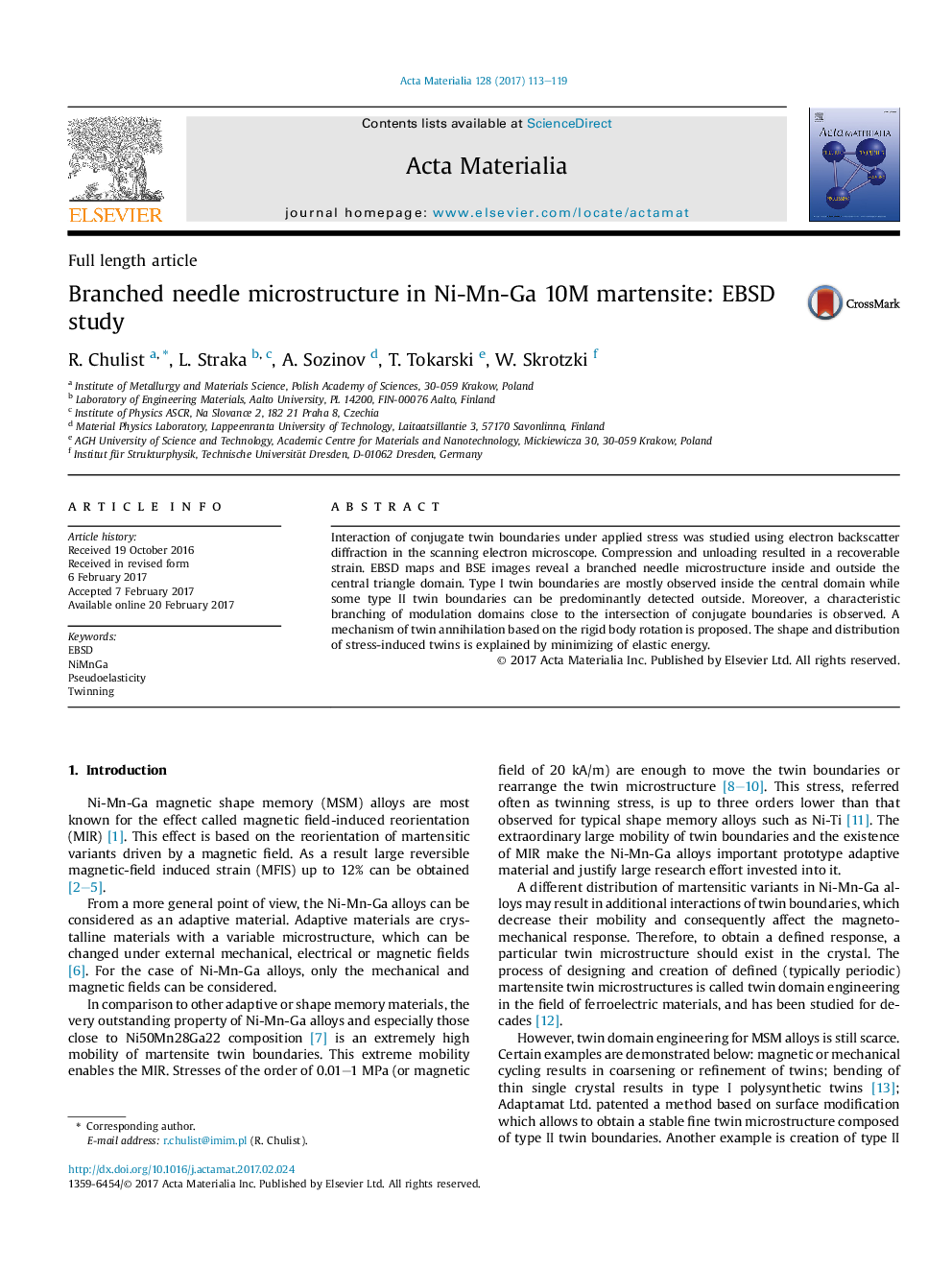| Article ID | Journal | Published Year | Pages | File Type |
|---|---|---|---|---|
| 5436265 | Acta Materialia | 2017 | 7 Pages |
Interaction of conjugate twin boundaries under applied stress was studied using electron backscatter diffraction in the scanning electron microscope. Compression and unloading resulted in a recoverable strain. EBSD maps and BSE images reveal a branched needle microstructure inside and outside the central triangle domain. Type I twin boundaries are mostly observed inside the central domain while some type II twin boundaries can be predominantly detected outside. Moreover, a characteristic branching of modulation domains close to the intersection of conjugate boundaries is observed. A mechanism of twin annihilation based on the rigid body rotation is proposed. The shape and distribution of stress-induced twins is explained by minimizing of elastic energy.
Graphical abstractDownload high-res image (143KB)Download full-size image
